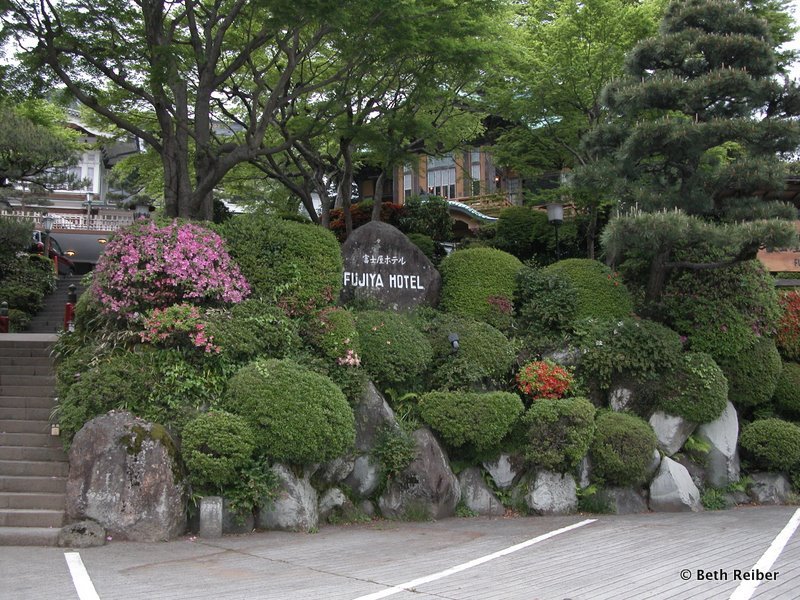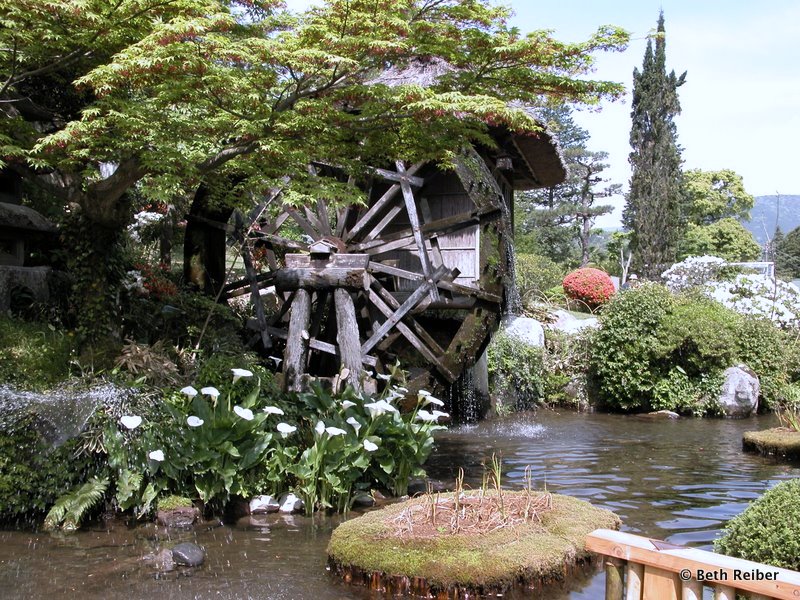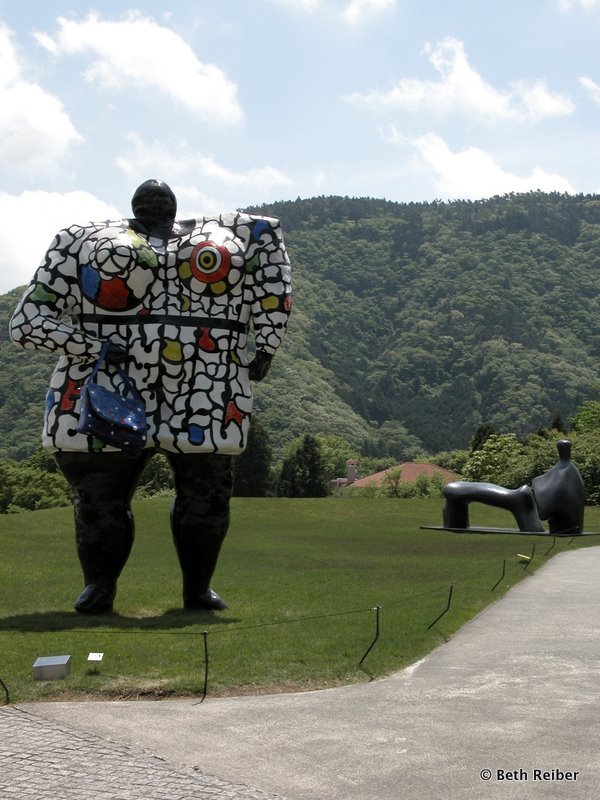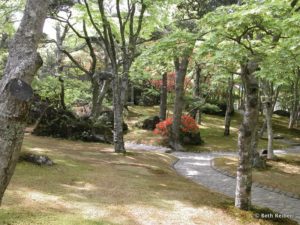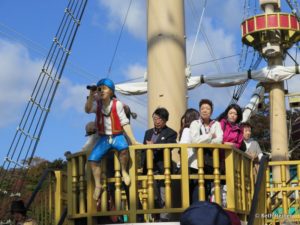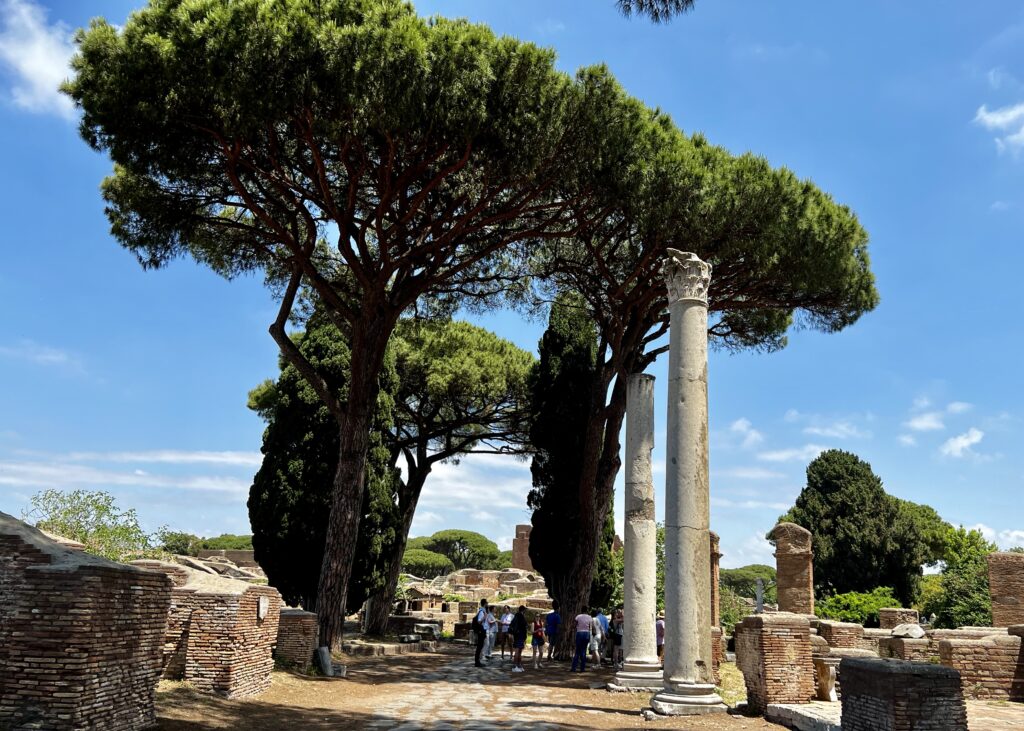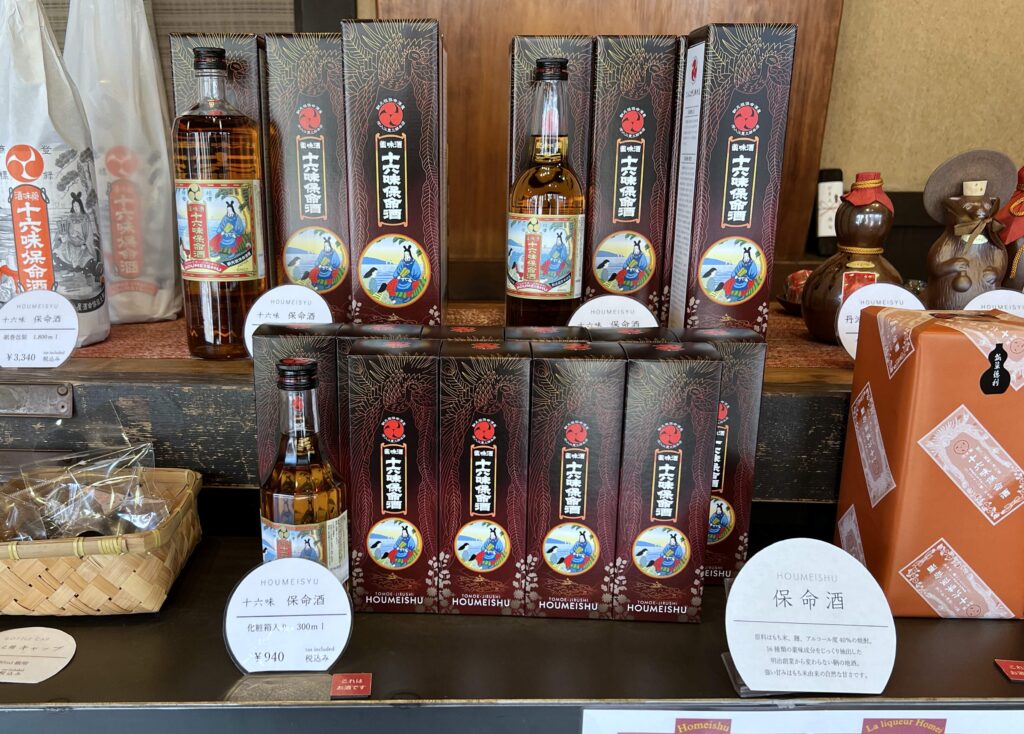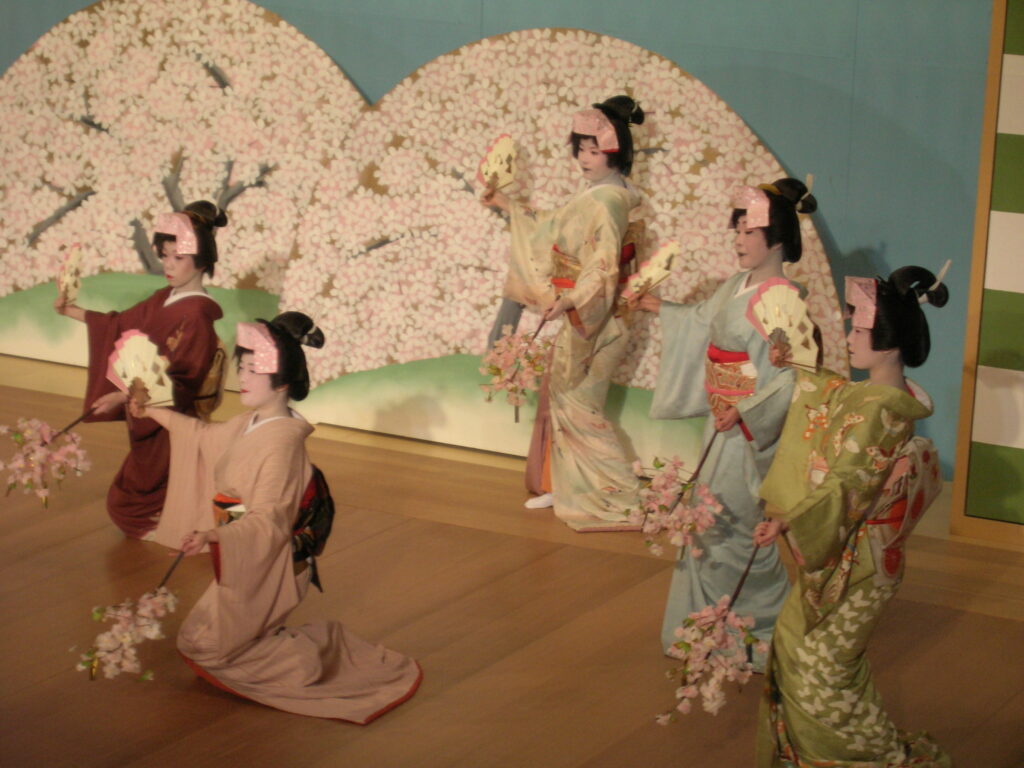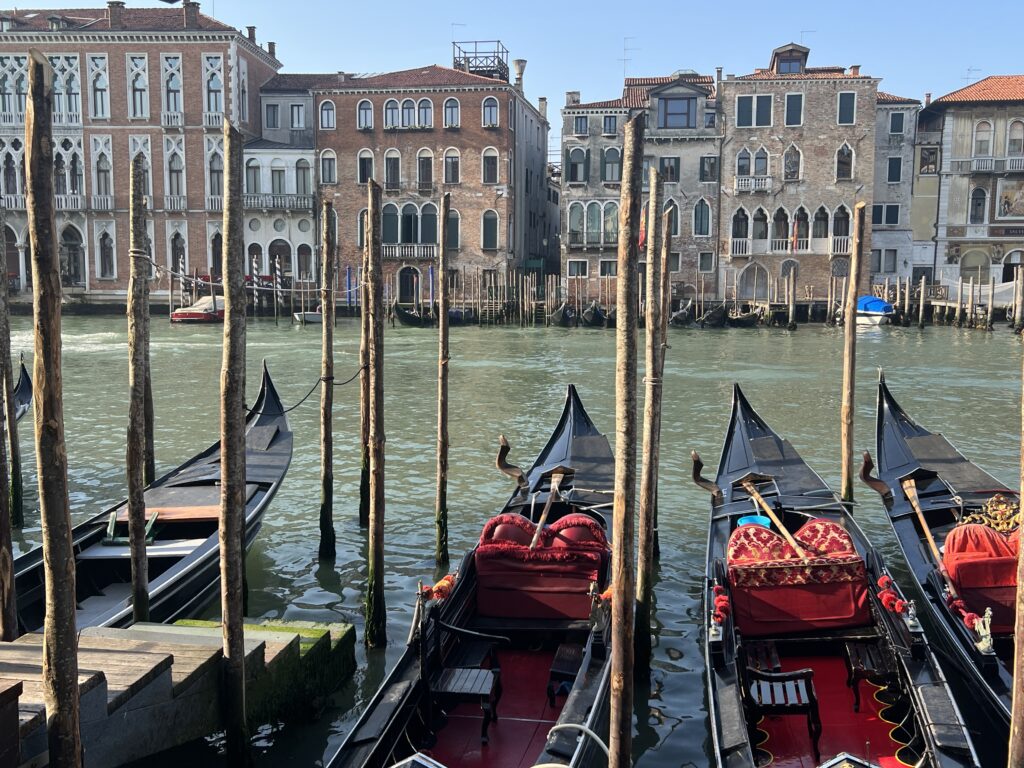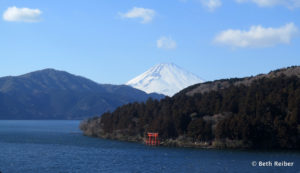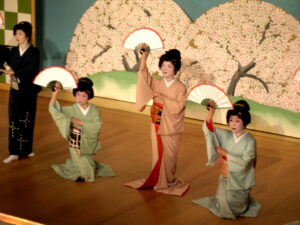Hakone is my favorite overnight trip outside Tokyo, but it’s also a great destination if you’re looking for places to visit between Tokyo and Kyoto. Located in the Fuji-Hakone-Izu National Park, it’s a well-trodden path for the fearful, yet just adventuresome enough for the intrepid. Traveling Hakone by mountain tram, cable car, ropeway and boat, the journey has everything you might wish for: beautiful mountain scenery, historic sites, great museums, kitsch, and hot-spring resorts. In fact, the entire circular trip is so much fun, I’ve probably traveled this route more a dozen times over the past 30-some years. Sometimes if I’m lucky, I even catch glimpses of Mt. Fuji. These are other reasons are why I consider Hakone Tokyo’s best overnight excursion.
By Train
The trip begins in Tokyo’s Shinjuku Station, aboard the Odakyu Romance Car (sorry to report, I’ve never actually witnessed any romance going on) for a 90-minute ride to Odawara (you can also reach Odawara by Shinkansen bullet train, good to know if you’re using a Japan Rail Pass). Sometimes I disembark here for a 10-minute walk to Odawara Castle. Like many castles in Japan, the original castle, built in 1416, was dismantled by the government in 1870 because of its associations with the shogun regime. It was reconstructed in 1960 as a faithful replica and houses a museum with artifacts from the shogun era.
By Mountain Tram
Otherwise, the next stop on the Romance Car is Hakone Yumoto Station, where travel switches to a delightful, mountain-climbing three-car electric tram that takes me right back to another era as it winds its way through woods and over ravines. My favorite historic hotel in all of Japan—the Fujiya Hotel—is along this route. Established in 1878 and nestled on the side of a wooded mountain, the old-fashioned, majestic lodge seems little changed over the decades, just the kind of place I can imagine my peripatetic grandparents unpacking huge suitcases after months on the road. In addition to a sprawling garden complete with a river-fed pool, an indoor thermal pool and hot-spring baths, it has a grand dining hall added in 1930, a good spot for lunch.
Nearby is the Hakone Kowakien Yunessun, public baths where bathers wear swimsuits (perfect for the shy, or, if they’re my age, the simply embarrassed) and can dip in both indoor and outdoor baths, some filled with ingredients that look good enough to drink—sake, coffee, and wine. Purists can head straight to the adjoining Mori No Yu, with traditional Japanese hot-spring baths.
But one of the main reasons I think Hakone is Tokyo’s best overnight excursion is because of the Hakone Open-Air Museum, which displays some 400 sculptures in a spectacular setting of formal gardens, glens, and grassy meadows against a canvas of mountain ranges. It also boasts more than 300 works by Picasso, as well as one of the world’s largest collections of Henry Moore. After tromping around to see everything, I love sitting down at the outdoor hot-spring footbath, where I can soak my tired feet and feast my eyes on beauty both natural and manmade.
By Cable Car, Ropeway and Boat
Next on the agenda is a cable car for a long, uphill haul, but I always get off about halfway
up for a stop at the Hakone Art Museum, which displays Japanese pottery and ceramics from ancient times to the Edo Period. It also has an enticing bamboo grove and moss garden complete with a tea house with the requisite green tea. At the end of the cable-car ride, a ropeway lifts travelers to Owakudani, a barren peak of bare rock and sulfurous steam escaping from crevices. A 10-minute hiking path leads past the fumes to a hut where wizened women sell eggs boiled in the hot waters. After reboarding the ropeway, travelers find themselves deposited at Lake Ashi, where they climb aboard—get this—replica pirate ships that sail onward to Hakone-machi.
On Foot
In Hakone-Machi there’s the Hakone Check Point, with a replica of a guardhouse once used to check travelers and inspect goods along the Tokaido Highway connecting Kyoto with Edo (Tokyo) during the Edo era. Nearby is a remnant of the old highway itself, lined with magnificent cedars planted as far back as 1618. It stretches 1.5 miles to the next town, Moto-Hakone, where there’s the small but sweet Narukawa Art Museum, specializing in modern works in the traditional Nihonga Japanese style of painting, developed more than 1,000 years ago.
Sometimes I’ve been lucky enough to catch a glimpse of Mt. Fuji from this end of Lake Ashi before heading back to Odawara by bus, where I can then catch the Romance Car back to Shinjuku or take the Shinkansen onward to Kyoto. After two days in Hakone, I’m definitely feeling more refreshed and romantically inclined, especially if I reflect back on that pirate ship, which naturally brings to mind Johnny Depp.
Things to do and see and glimpses of Mt. Fuji, plus the fun circular route via various modes of transportation, is why I consider Hakone Tokyo’s best overnight excursion.

